

Acupressure vs. Painkillers: Which Works Better for Long-Term Relief?
Executive summary
Acupressure and pharmaceutical painkillers (from over-the-counter acetaminophen/NSAIDs to prescription opioids) represent two very different approaches to pain. Painkillers provide relatively fast, dose-dependent symptom relief but carry well-documented risks when used long-term (gastrointestinal, cardiovascular, renal harm for NSAIDs; dependence, tolerance, overdose risk for opioids). Acupressure — a manual, noninvasive stimulation of points on the body drawn from traditional East Asian medicine — shows evidence of benefit for several pain syndromes (low back pain, cancer-related pain, labor pain, postoperative pain) and can reduce analgesic use in some contexts. However, the strength of evidence varies by condition, and acupressure’s average effect sizes are typically modest to moderate and may require repeated or ongoing sessions/practice to maintain benefit. Current clinical guidelines emphasize maximizing nonpharmacologic options (including manual therapies) before or alongside opioids for chronic noncancer pain. For long-term relief, combining approaches (multimodal pain care) — patient education, physical rehabilitation, behavioral therapies, targeted manual therapies like acupressure/acupuncture, and careful pharmacologic strategies — usually provides the best balance of sustained benefit and safety. CDC+2JAMA Network+2
Table of contents
- Introduction: defining terms and scope
- How acupressure is thought to work (mechanisms)
- How common painkillers work and their long-term implications
- Evidence base: acupressure clinical trials and meta-analyses
- Evidence base: long-term effectiveness and harms of painkillers
- Head-to-head and comparative contexts (where each shines)
- Safety, adverse effects, and patient suitability
- Practical considerations: access, cost, adherence, training
- Clinical guidelines and policy context
- A pragmatic decision framework for clinicians and patients
- Conclusion: which “works better” for long-term relief?
- Selected references and further reading
1. Introduction: defining terms and scope
This review compares acupressure (manual pressure applied to specific points on the body — often those used in acupuncture — performed by practitioners or self-administered) with painkillers (analgesic medicines, including acetaminophen/paracetamol, nonsteroidal anti-inflammatory drugs (NSAIDs) such as ibuprofen and naproxen, and opioids like morphine and oxycodone). The focus is on long-term relief — i.e., sustained reduction of pain and improvement in function over months to years — rather than immediate, short-lived symptom control.
We consider: mechanism, quality and quantity of evidence, safety profile, guideline recommendations, and real-world practicality for chronic (noncancer) pain and certain special situations (e.g., cancer pain, postoperative pain, labor pain).
2. How acupressure is thought to work (mechanisms)
Acupressure comes from the same meridian/point system as acupuncture, but needles are replaced by manual pressure, massage, or sustained touch. Proposed mechanisms (supported to various extents by experimental and imaging studies) include:
Endogenous analgesia: stimulation of points can trigger release of endorphins and enkephalins (body’s own opioids), reducing nociceptive signaling.
Neuromodulation: pressure can alter peripheral nociceptor firing and modulate spinal cord dorsal horn processing, reducing central sensitization in some patients.
Descending pain inhibition: point stimulation can activate descending inhibitory pathways (periaqueductal gray, rostroventral medulla) seen in functional imaging.
Placebo / contextual effects: ritual, expectation, and therapeutic interaction contribute substantially to perceived benefit in many manual therapies; these are real effects that influence outcomes.
Local effects: increased local blood flow, reduced muscle tension, and soft-tissue release may relieve mechanical contributors to pain.
Mechanistic research is evolving; acupressure likely operates via a mix of neurochemical, neurophysiologic, and psychosocial pathways, which helps explain why effects vary between individuals and conditions. PMC
3. How common painkillers work and their long-term implications
Analgesic classes (brief)
Acetaminophen/paracetamol: central analgesic mechanisms, modest effect for many pains.
NSAIDs (ibuprofen, naproxen, diclofenac): inhibit cyclooxygenase (COX) enzymes → reduce prostaglandin synthesis → analgesic and anti-inflammatory. Effective for inflammatory and musculoskeletal pain.
Opioids (morphine, oxycodone, tramadol): agonize opioid receptors → powerful analgesia but with tolerance, dependence risk, sedation, constipation, respiratory depression.
Adjuvants: antidepressants, anticonvulsants for neuropathic pain — useful but outside direct analgesics discussed here.
Long-term implications
NSAIDs: effective for pain and function in many musculoskeletal conditions when used intermittently; long-term daily use increases risk of gastrointestinal bleeding, peptic ulceration, renal impairment, and cardiovascular events (dose- and agent-dependent). Risk accumulates with age and comorbidities. Mayo Clinic
Acetaminophen: generally safer for GI/cardiovascular system but concerns about hepatotoxicity at high/combined doses. Long-term modest benefit for some low back/osteoarthritis pain but limited comparative advantage.
Opioids: while opioids can reliably reduce severe pain short-term, evidence for long-term benefit on pain and function in chronic noncancer pain is weak and mixed. They carry substantial risks: tolerance, opioid use disorder, overdose, endocrine dysfunction, and hyperalgesia (worsening pain). Clinical guidance has shifted strongly toward minimizing long-term opioid use for most chronic noncancer pain and prioritizing nonpharmacologic strategies. CDC+1
4. Evidence base: acupressure clinical trials and meta-analyses
Overall pattern: randomized controlled trials (RCTs) and meta-analyses show acupressure yields small to moderate reductions in pain across a variety of conditions. The strength of evidence varies by indication.
Key findings by condition
Chronic low back pain (CLBP): Multiple RCTs and small meta-analyses report clinically meaningful pain reduction (often defined as ≥30% improvement) after series of sessions; effect sizes vary and maintenance over months depends on ongoing treatment or self-management. Some studies report improvement in function and quality of life. ScienceDirect+1
Cancer-related pain: A systematic review and meta-analysis reported that acupuncture and/or acupressure were associated with reduced cancer pain and decreased analgesic use, suggesting potential opioid-sparing benefits in oncology settings. Evidence quality is moderate and trials heterogeneous. JAMA Network
Labor pain: Meta-analyses show acupressure (points like SP6, LI4) can reduce labor pain intensity and improve maternal comfort; these effects are often immediate and can decrease analgesic requirements during labor. BioMed Central
Postoperative and procedural pain: Several trials suggest acupressure can lower pain scores and analgesic consumption in the immediate postoperative period; effects are less studied long-term.
Other conditions (headache, osteoarthritis, depression-related pain): Mixed results—some RCTs show benefit, others find small/no difference over sham.
Quality and limitations
Heterogeneity: Trial quality and methods differ widely (point selection, dose, duration, practitioner expertise).
Sham control challenges: Designing inert shams is difficult (touch alone can be therapeutic), so placebo-controlled effect sizes may be smaller than vs. usual care.
Dose and maintenance: Many trials show benefit after several sessions, but sustained long-term relief often requires ongoing self-care or repeat sessions.
Publication bias & small studies: Some positive results come from small trials; high-quality large RCTs are fewer.
Bottom line: For many patients, acupressure is a low-risk, moderately effective nonpharmacologic option that can reduce pain and sometimes decrease analgesic use — particularly valuable as part of a multimodal strategy. ScienceDirect+1
5. Evidence base: long-term effectiveness and harms of painkillers
NSAIDs and acetaminophen
Efficacy: Both provide reliable short-term pain relief for many musculoskeletal conditions; NSAIDs offer anti-inflammatory benefit. Long-term analgesic effects may persist but are balanced against increasing harms.
Harms: Chronic NSAID use raises the risk of GI bleeding, renal impairment, and increased cardiovascular events (especially in patients with CVD risk factors). Thus, clinicians assess risk/benefit and often aim for the lowest effective dose for the shortest necessary time. Acetaminophen has better GI/cardiac safety but carries liver toxicity risk with overdose. Mayo Clinic
Opioids
Efficacy: Systematic reviews indicate limited evidence that long-term opioid therapy improves function or quality of life in chronic noncancer pain. Some patients have meaningful pain reduction, but population-level benefits are modest and inconsistent.
Harms: Substantial — tolerance, dependence, opioid use disorder, increased risk of overdose and death (higher with higher doses and concurrent benzodiazepine use), hormonal dysfunction, cognitive impairment, and opioid-induced hyperalgesia. Because of these harms, guidelines strongly advise prioritizing nonopioid approaches and careful patient selection when opioids are used. CDC+1
Long-term outcomes summary
Pain killers can work well for episodic or short-term pain and for severe pain requiring rapid control (e.g., postoperative, cancer). For chronic noncancer pain, the long-term advantages decline while cumulative harms grow, making them less favorable as sole long-term strategies.
6. Head-to-head and comparative contexts (where each shines)
Because there are few large, rigorous head-to-head RCTs directly comparing acupressure with chronic pharmacologic regimens over many months, the comparison is contextual rather than definitive.
Situations favoring painkillers
Severe acute pain needing rapid control (fracture, severe postoperative pain).
Advanced cancer pain or palliative care where opioids are first-line for moderate-to-severe pain.
Short courses where risk is limited and rapid function restoration required.
Situations favoring acupressure (or as first-line adjunct)
Mild–moderate chronic musculoskeletal pain where long-term NSAID/opioid risks are a concern.
Patients seeking nonpharmacologic care (pregnant women avoiding medications during certain periods, those with GI/renal contraindications to NSAIDs).
Patients wanting opioid-sparing strategies in cancer care or postoperative recovery; studies suggest acupressure/acupuncture may reduce analgesic requirements. JAMA Network+1
Combined approach
Most modern pain management favors multimodal care: exercise/physiotherapy, cognitive behavioral strategies, weight management, ergonomics, and selective use of medications, with acupressure/acupuncture as adjuncts. Combining lower-risk pharmacologic therapy with acupressure can yield better long-term function and reduce medication exposure.
7. Safety, adverse effects, and patient suitability
Acupressure
Harms: Very low in competent hands. Possible transient soreness, bruising, or discomfort at points. Rarely, inappropriate vigorous manipulation could worsen an injury, so screening (e.g., for fractures, severe osteoporosis) matters.
Suitability: Most adults, including many pregnant women (with certain point-specific cautions), can use acupressure. It’s attractive for those avoiding systemic drug exposure.
Painkillers
Short-term: Well tolerated when used as directed.
Long-term: Accumulating organ/system risks (NSAIDs, liver for acetaminophen, opioid dependence/overdose). Requires monitoring (kidney function, blood pressure, GI surveillance) and informed consent. Mayo Clinic+1
8. Practical considerations: access, cost, adherence, training
Acupressure access: Can be delivered by trained practitioners.
Skill variability: Practitioner experience and technique matter. Standardizing point protocols improves reproducibility but personalizing treatment can be equally important.
Adherence: Self-care requires patient engagement; some patients prefer an “active” role and adhere better.
Medication cost & adherence: Analgesics are widely available and often inexpensive, but chronic medication costs accumulate; adherence relates to side effects and perceived benefit.
9. Clinical guidelines and policy context
Major public health and clinical organizations have shifted toward prioritizing nonpharmacologic therapies where possible for chronic pain. For example:
CDC (2022 updates): Recommends maximizing nonpharmacologic and nonopioid therapies for acute, subacute, and chronic pain, noting that nonopioid therapies are at least as effective as opioids for many common acute pains and emphasizing individualized, multimodal care for chronic pain. CDC+1
Specialty guidance: Many pain and primary care guidelines endorse nonpharmacologic modalities (exercise, manual therapies, behavioral interventions) and consider acupuncture/acupressure reasonable adjuncts in certain conditions. Integration of acupressure/acupuncture is often recommended as part of a broader rehabilitation program rather than as a sole long-term therapy.
10. A pragmatic decision framework for clinicians and patients
When deciding between acupressure and painkillers for long-term relief, use a patient-centered, stepwise process:
Define goals: pain reduction, improved function, sleep, return to work.
Assess pain type and severity: nociceptive vs neuropathic vs mixed; acute vs chronic; presence of inflammation.
Risk stratify: age, comorbidities (CVD, renal disease, liver disease, substance use disorder), concomitant medications.
Start with low-risk options: self-management, exercise, education, weight management, ergonomic adjustments. Teach self-acupressure where suitable.
Add targeted therapies: NSAIDs or acetaminophen for inflammatory/musculoskeletal pain when benefits outweigh risks; consider topical NSAIDs first for some localized pains to reduce systemic exposure.
Reserve opioids: for moderate-to-severe refractory pain where other options failed, with clear goals, monitoring, and exit strategies. Follow guideline-recommended monitoring. CDC
Measure outcomes: use pain scores and functional measures, reassess frequently, and discontinue ineffective long-term strategies.
Combine when effective: acupressure plus lower-dose pharmacotherapy can achieve symptom control with reduced medication exposure.
11. Conclusion: which “works better” for long-term relief?
There is no universal winner — the “better” option depends on the condition, patient goals, risk profile, and treatment context.
For safety and sustainability in chronic noncancer pain: acupressure (as part of multimodal care) is a compelling, low-risk component that can provide moderate long-term benefit and reduce reliance on drugs. Many patients achieve meaningful pain reductions and functional gains, especially when combined with exercise and education. Evidence supports benefit in low back pain, cancer pain adjuncts, labor pain, and some postoperative settings. ScienceDirect+1
For rapid or severe pain and specific medical contexts (e.g., advanced cancer pain): painkillers — including opioids — are often necessary and effective. But for long-term maintenance of chronic noncancer pain, the evidence supporting sustained functional improvement with chronic high-dose analgesics (especially opioids) is limited and must be balanced against significant harms. CDC+1
Best practice: favor multimodal, individualized care. Prioritize nonpharmacologic strategies (like acupressure) and nonopioid medications where appropriate; reserve long-term systemic opioids for carefully selected cases with clear monitoring. Patient preference, tolerability, and practical access are important: teaching self-acupressure empowers patients and reduces medication dependence for many.
12. Selected references and further reading (key sources)
CDC. Clinical Practice Guideline for Prescribing Opioids for Pain (updated 2022). Important guidance emphasizing nonpharmacologic and nonopioid therapies for chronic pain. CDC+1
JAMA Oncology (systematic review & meta-analysis): acupuncture and/or acupressure associated with reduced cancer pain and decreased analgesic use; evidence moderate and heterogeneous. JAMA Network
Nielsen A. Acupuncture Therapy as an Evidence-Based… (2022) — reviews mechanisms and evidence for acupuncture’s analgesic effects and role in reducing opioid reliance. PMC
Godley E. Efficacy of acupressure for chronic low back pain (2020) — RCTs/meta-analysis showing clinically significant reductions in pain in treatment groups. ScienceDirect
Mayo Clinic. Chronic pain: Medication decisions — practical overview of NSAIDs and long-term considerations for analgesic use. Mayo Clinic
Practical patient takeaway (short)
If your pain is acute or severe, the user can login to WWW.LIVECURE24.COm and online instant can expect pain relief without any consultation or medication.
If your pain is chronic, its observed that medication is not helpful, but acupressure or acupuncture is instant pain relief.
Feel free to use images in our website by simply providing a source link to the page they are taken from.
-- LiveCure
Share views on Acupressure vs. Painkillers: Which Works Better for Long-Term Relief?
Please keep your views respectful and not include any anchors, promotional content or obscene words in them. Such comments will be definitely removed and your IP be blocked for future purpose.
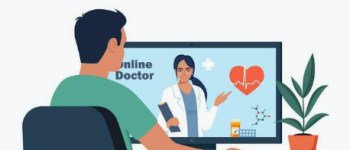 8th Sep 2025
8th Sep 2025
 9th Dec 2024
9th Dec 2024
 19th Dec 2024
19th Dec 2024
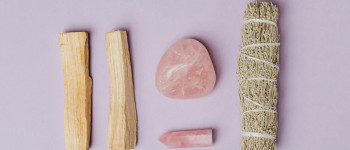 5th May 2025
5th May 2025
 10th Oct 2025
10th Oct 2025
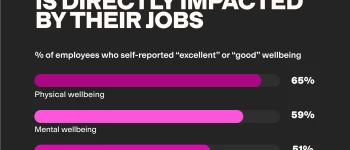 2nd May 2025
2nd May 2025
 6th Sep 2025
6th Sep 2025
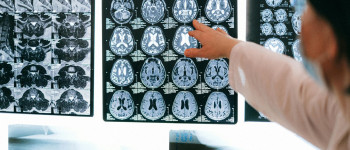 19th Dec 2024
19th Dec 2024
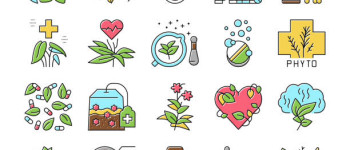 18th Jun 2025
18th Jun 2025
 6th Sep 2025
6th Sep 2025
 5th May 2025
5th May 2025
 4th Jun 2025
4th Jun 2025
 27th Sep 2025
27th Sep 2025